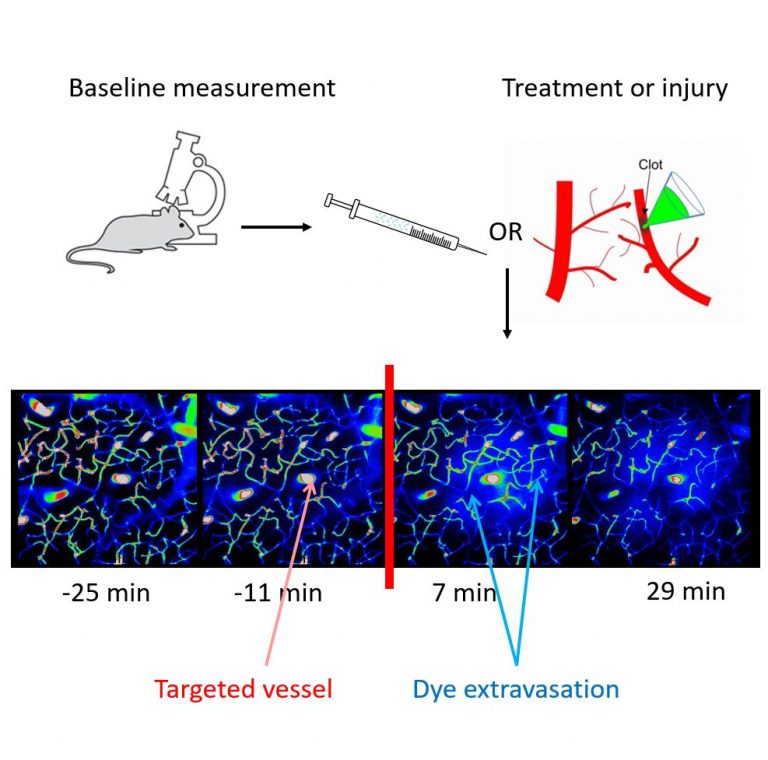The integrity of Blood-Brain Barrier (BBB) is a hallmark of healthy brain. Longitudinal monitoring of this parameter is essential for ensuring that drug delivery is achieved without compromising the brain’s natural defense mechanisms.
We use i.v. injection of fluorescently-labelled dextran molecules (e.g., the albumin-size 70 kDa dextran, and a range of other dextrans 10-200 kDa in size) to measure ratiometrically the degree of BBB integrity, and to detect and quantify the leakiness of BBB potentially associated with ageing, disease progression and/or treatment.
In many of our studies, the BBB Integrity assay is combined with other imaging readouts such as trans-BBB PK of biologics, drug effects on dendritic spine turnover or microglial dynamics, mitochondrial fragmentation, or calcium signaling.
Study design
- 2-3 groups (e.g., 1 placebo, 1-2 compounds or 1-2 doses)
- 4 imaging sessions (0 h – 1 h, 24 h, 72 h, 144 h)
- 1-3 imaging areas per animal
- 5-15 regions of interest (ROIs) in vessels versus 5-15 ROIs in parenchyma per imaging area
- report delivered 2-3 months after the study commencement
Options and extensions
- In Pain model studies, BBB integrity measurements can be combined with behavioral readouts of pain-related hypersensitivity of hind paw skin (using von Frey filaments).
Papers:
-
Shi L., Palacio-Mancheno P., Badami J., Shin D.W., Zeng M., Cardoso L., Tu R., Fu B.M. 2014. Quantification of transient increase of the blood-brain barrier permeability to macromolecules by optimized focused ultrasound combined with microbubbles. Int. J. Nanomed. 9:4437–4448. 10.2147/IJN.S68882
-
Biancardi V. C., Son S. J., Ahmadi S., Filosa J. A., and Stern J. E. 2014. Circulating angiotensin II gains access to the hypothalamus and brain stem during hypertension via breakdown of the blood‐brain barrier. Hypertension 63:572–579. 10.1161/HYPERTENSIONAHA.113.01743
-
Burgess A., Nhan T., Moffatt C., Klibanov A.L., Hynynen K. 2014. Analysis of focused ultrasound-induced blood-brain barrier permeability in a mouse model of Alzheimer’s disease using two-photon microscopy. J. Control. Release. 192:243–248. 10.1016/j.jconrel.2014.07.051
